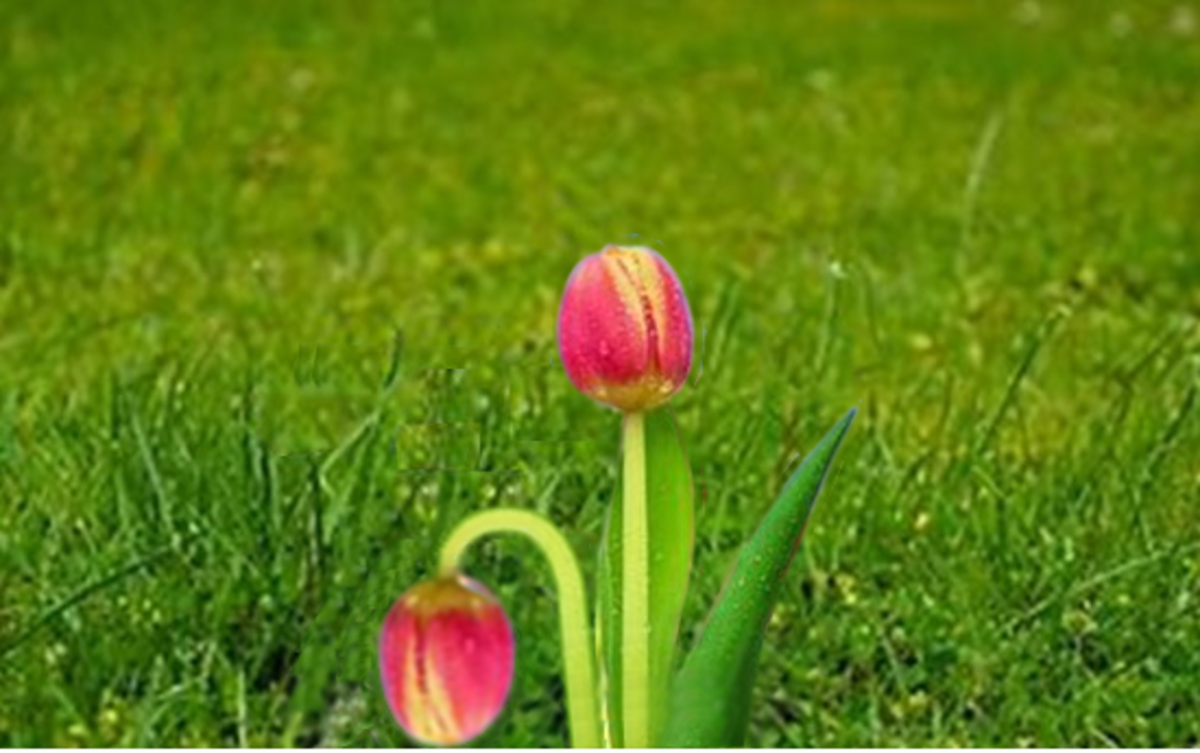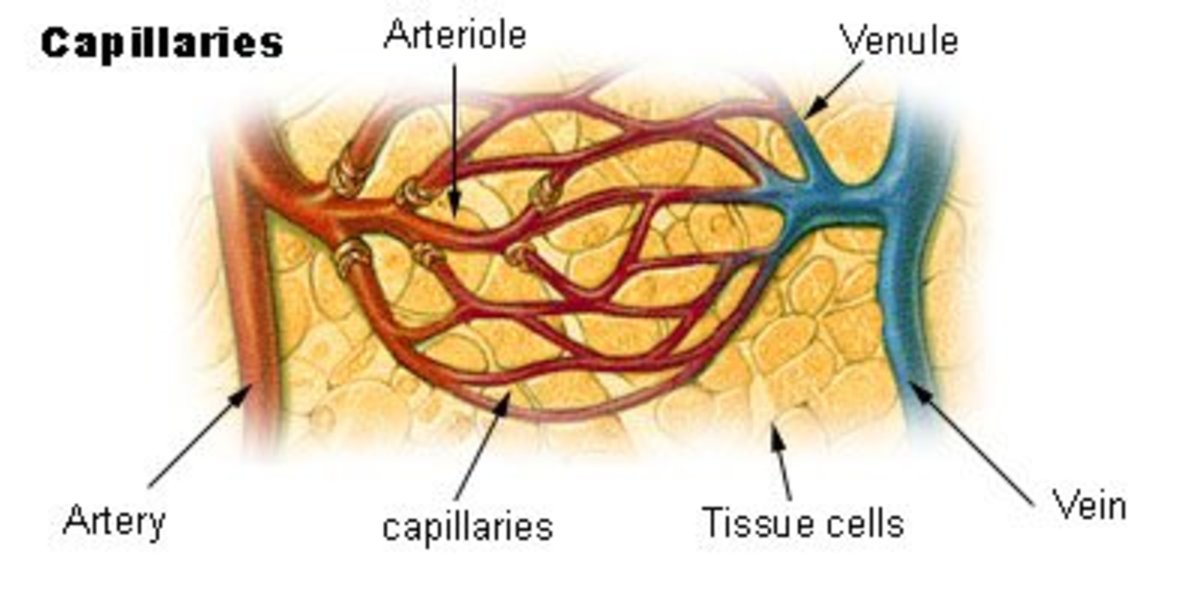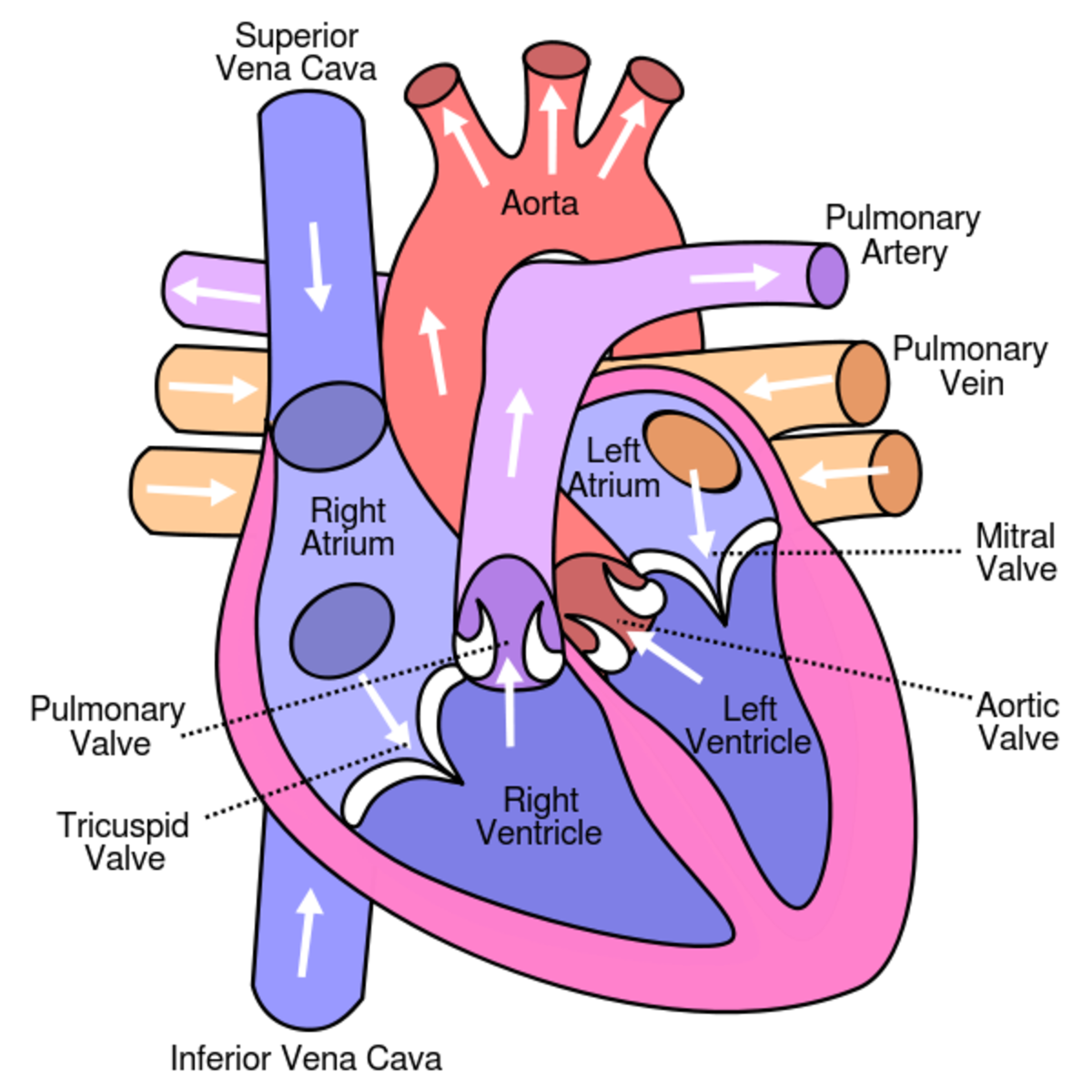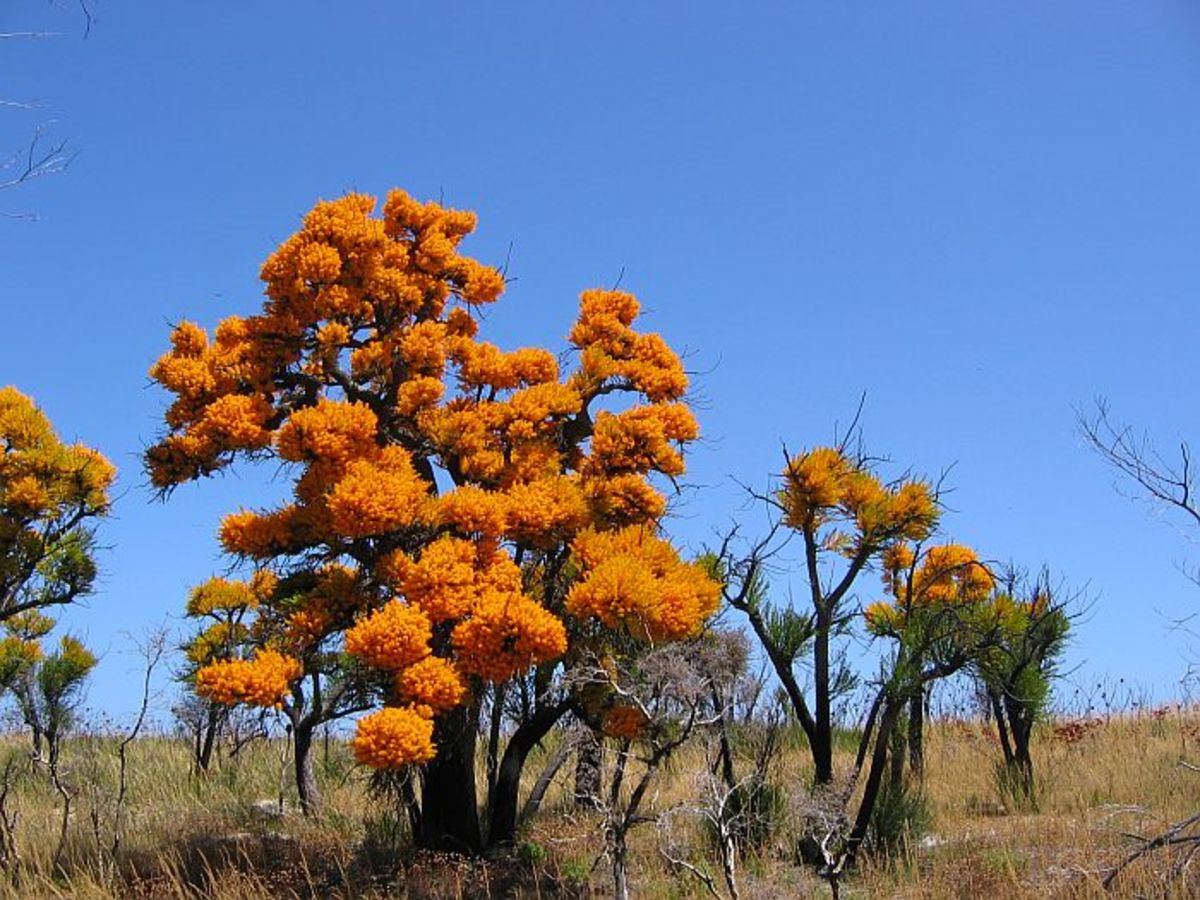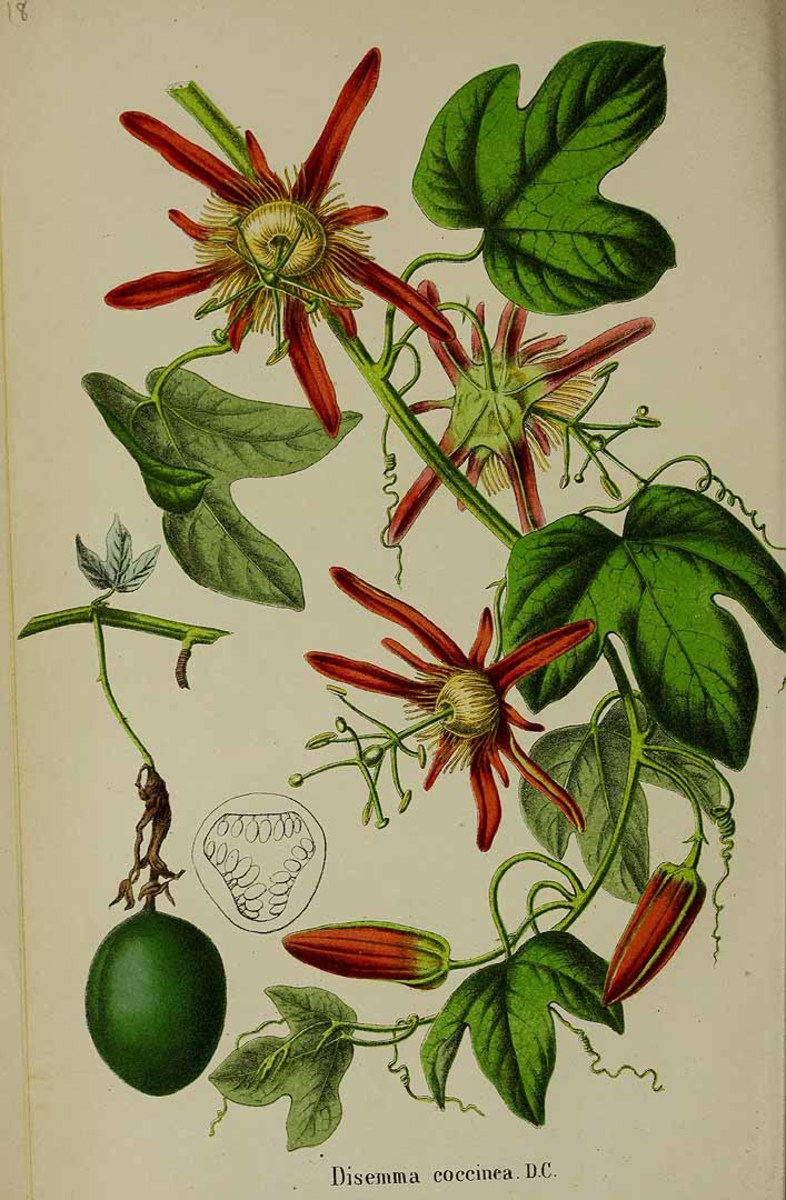Circulatory System (plants and animals)
Circulation is the process by which food and oxygen are carried to the tissues and wastes are carried away.
Transport in Plants
In plants, vascular tissues are chiefly specialized for transporting water, food and wastes. There are two types of vascular tissues: xylen and phloem. The xylem cells carry H20 and dissolved minerals from the soil to all parts of the plants while phloem is a tissue that transports food produced in the leaves to other parts of the plants.
The Root Tip
The tip of the root is the region that absorbs water from the soil. At the end of the root tip is a rounded cap of cells that protects the growing point as it pushes through the soil. This root cap is made of loosely attached cells that tear off easily. They are quickly replaced by new ones that develop from the meristem. The meristem or growing point is located behind the root cap. Just above the meristem is the region of elongation. The cells in this region increase greatly in length, but not in number. As they expand, they push the root tip through the soil. Behind the region of elongation is the region of differentiation. The first fully differentiated cells are found in this region. Because they are the first permanent root tissues, they are called the primary tissues. There are three primary tissues: the vascular cylinder, the cortex, and the epidermis. The innermost layers of cells in the root become the xylem and phloem of the vascular cylinder. The middle layers of cells form the cortex, a region of parenchyma cells. The innermost layer of the cortex forms the endodermis while the outermost layer of cells develop into the epidermal tissue or epidermis.
Root hairs emerge from the epidermal cells and absorb water from the soil. Some floating plants lack root hairs because the water can easily enter any part of the epidermis. In terrestial plants, root hairs last only for a few days. They are constantly being replaced by new ones closer to the tip. Their function is to increase the surface area for the absorption of water. Water passes through the root hair by osmosis whenever the concentration of water is greater in the soil than in the plant cells. When the epidermal cells absorb water from the soil, the water content in these cells become greater than the neighboring cells, hence, water moves from cell to cell across the root of the xylem, which transports the water to the stem and up the plant.
Above the root hair zone, the epidermal cells form a single layer of smooth-walled cells around the outer surface. Here, the main function is to protect the inner tissues of the root. Inside the epidermis is a thick region of loosely packed parenchyma cells called the cortex. Inside the cells are large vacuoles that store starch. The innermost layer of the cortex is the endodermis that controls the amount of water that passes through the vascular cylinder. The vascular cylinder is the conducting core of the root.
Cohesion-pull Theory
The water that is lost through the stomata has to be replaced by water absorbed from the soil. Tremendous pressure would be required to push water up to the tops of tall trees because the force of gravity has to be overcome. The widely accepted explanation is the cohesion-pull theory. As water transpires from the stomata and the spaces below them, osmotic pressure is set up that causes the water to flow into the spaces from the surrounding cells. They, in turn, draw water from the xylem cells adjacent to them. From there, the molecules form a continuous column in the xy-lem all the way down to the root. Water molecules have a strong cohesive force on each other and are believed to "pull" themselves up the xylem because of the osmotic pressure created in the leaves. The tension created in the continuous column of water is sufficient to overcome the force of gravity draw water up the tree. The pressure of water in the soil may also be a driving force that "pushes" water in the root.
Diffusion and Cyclosis
In single-celled organisms and some small multicellular organisms, the transport of materials is carried on by diffusion. However, diffusion is a very slow means of transport and cannot by itself meet the needs of the organism fast enough. Hence, in some organisms, the cytoplasm within the ceil moves to carry the materials within the cell throughout the cell. This movement of the cytoplasm is called cyclosis or cytoplasmic streaming.
Transport in Hydra
Water is the medium from which the Hydra gets its food and other materials needed for metabolism. Water that enters the mouth is carried into the gastrovacular cavity. Specialized flagellated cells create a water current by the movement of their flagella thus causing the circulation of food-laden water to circulate. The endodermal cells that line the gastro-vascular cavity get the food substances and after digesting the food, pass the simple forms on to the cells of the epidermis. Each cell gets rid of its carbon dioxide by expelling it to the cavity of diffusion.
Transport in Sponges
Sponges have sac-liked bodies with numerous microscopic pores, the incurrent pores for the entrance of water carrying food and oxygen. Also present are larger openings for the exit of water with wastes, the excurrent pores. The inner body wall is lined with specialized collar cells with flagella. The movement of the flagella creates a current that draws water into the incurrent pores. This fresh supply of water forces out the water already laden with wastes and carbon dioxide out through the excurrent pore.
Transport in Other Simple Animals
Planaria has a gastrovascular cavity that branches into all parts of the body which also serves as a means of transport. Jellyfish has a series of radial canals that link the digestive cavity to a circular canal found along the rim of the umbrella. Contractions of the umbrella cause the fluid in the system to flow through the canals thus distributing the food throughout the body. Nematodes have a fluid-filled cavity between the digestive tube and the body wall. Digested food which diffuse into this fluid are distributed by contractions of the body wall.
Transport Systems in Invertebrates
Higher invertebrates use food as the circulating fluid that carry food substances and oxygen through a system of open tubes to all parts of the body. Blood is pumped by hearts through vessels into large open spaces called sinuses. The blood thus bathes the tissues and materials are exchanged by diffusion directly through the cell membranes. The blood is then transported out of the sinuses by another set of vessels. This is the open transport system. It is found in arthropods and mollusks.
Transport Systems in Vertebrates
In vertebrates, the circulatory system is a system of closed tubes. The blood does not leave the blood vessels. This is called the closed transport system. Substances in the blood capillaries pass out into the tissue fluid that baths the cells and then into the cells by diffusion. Annelids, some mollusks and all vertebrates have this type of circulatory system.

